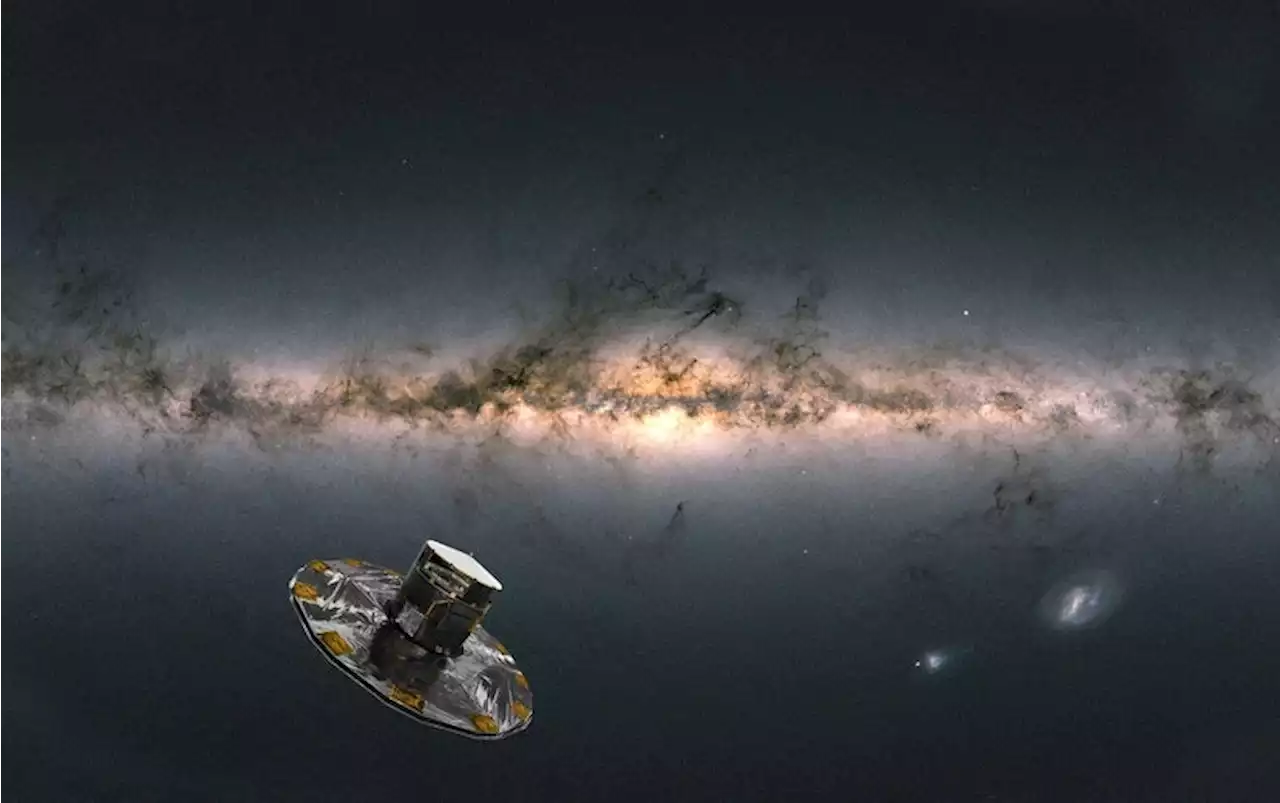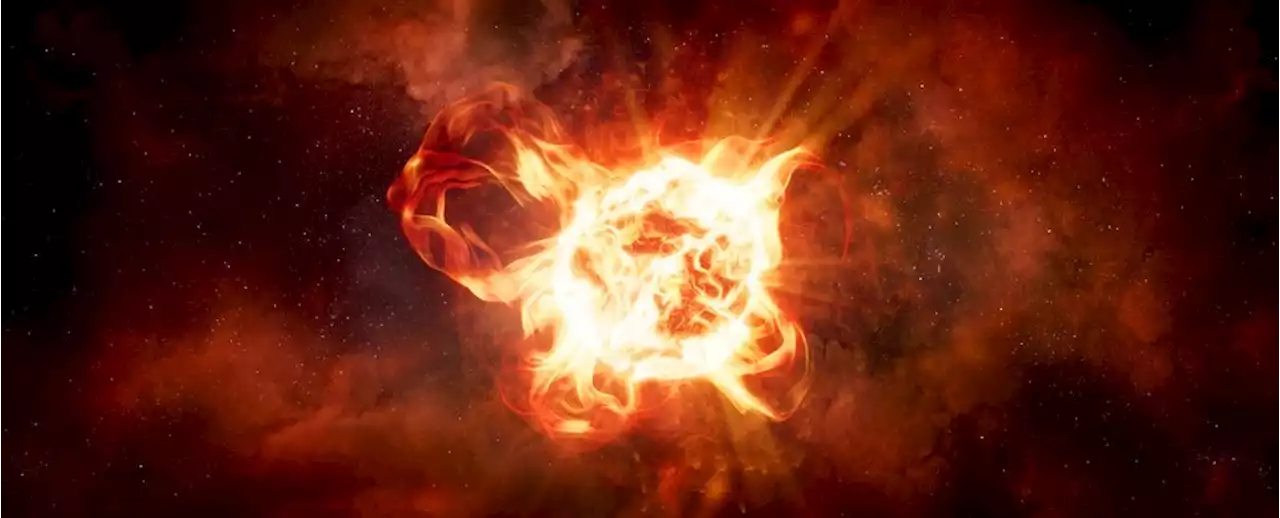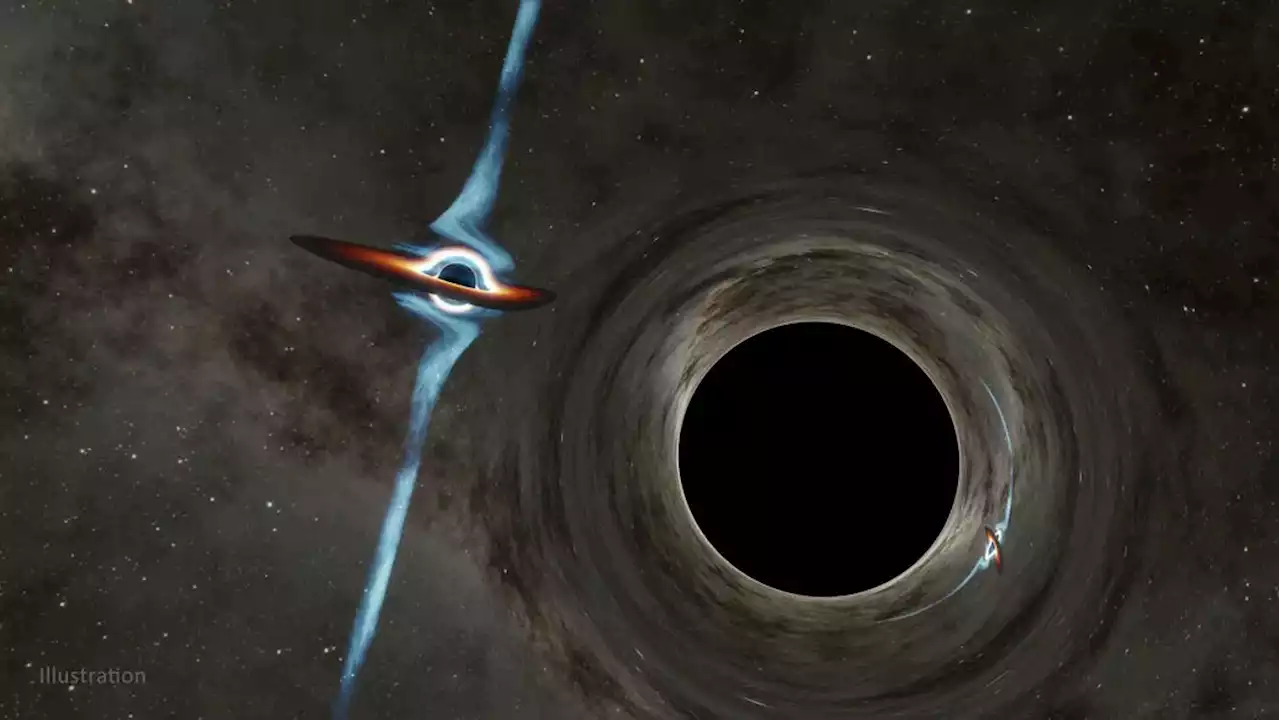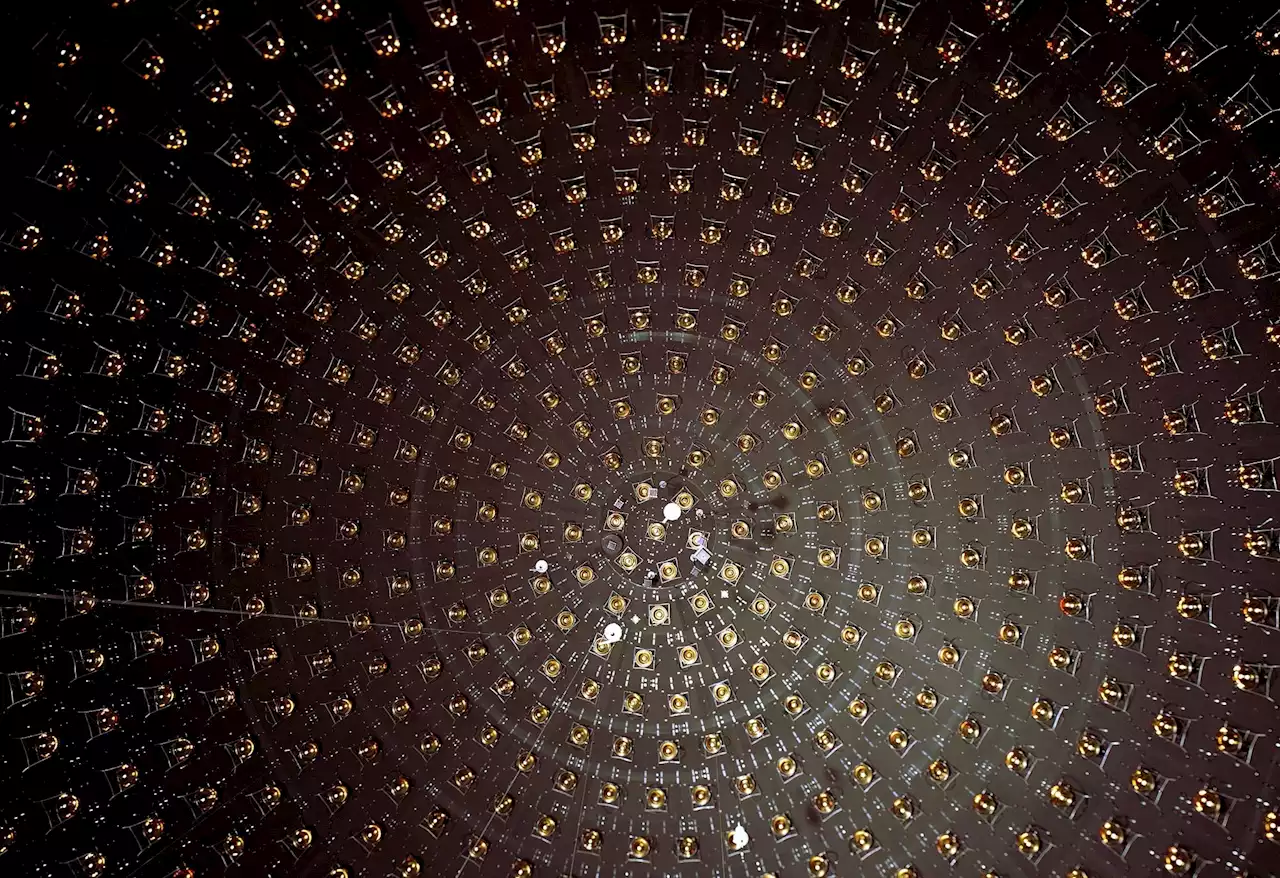Scientists have mapped Sagittarius—a neighboring dwarf galaxy—in exquisite detail, and they’ve used that map to provide a long-sought picture of the mysterious dark matter halo in which our Galaxy resides. ScienceMagArchives
Rewinding the clock, the researchers modeled the pas de trois over 3 billion years—and, as recently as 50 million years ago. The LMC's significant heft pulled our Galaxy, which then induced a force affecting Sagittarius. That helps explain a peculiar sideways tug on the Sagittarius stream, say Belokurov and his colleagues, who report the results in a paper posted to the preprint server arXiv.
The team's results suggest the distribution of dark matter around the Milky Way is complex. Closer to the disk of our Galaxy, where the dark matter is expected to be most dense, the halo takes the shape of a squashed sphere—a bit like a pumpkin, with the pumpkin's top pointing out of the galactic plane.
The twists and turns of this convoluted shape could provide hints as to how the Milky Way's halo is connected to the local network of dark matter filaments, called the cosmic web, that strings together neighboring large galaxies, Belokurov says. Kathryn Johnston, an astronomer at Columbia University who was not involved in the work, agrees."We've never been able to see anything beyond the simplest shape of the dark matter halo," she says."This is a hint of large-scale global deformation, and that's very exciting."
Gaining even this limited view of the Milky Way's dark matter halo is important, Belokurov says, because it's the closest halo we have access to: It could help researchers understand how light or heavy dark matter particles might be, and improve models that trace the evolution of the cosmic web from the big bang to today.
United States Latest News, United States Headlines
Similar News:You can also read news stories similar to this one that we have collected from other news sources.
 New Maps of Milky Way Are Biggest and Best YetThe latest data release from the European Space Agency’s Gaia mission is sparking a frenzy of exciting new astrophysics research
New Maps of Milky Way Are Biggest and Best YetThe latest data release from the European Space Agency’s Gaia mission is sparking a frenzy of exciting new astrophysics research
Read more »
 The Largest Star in The Milky Way Is Slowly Dying, And Astronomers Are WatchingThree-dimensional models of astronomical objects can be ridiculously complex. They can range from black holes that light doesn't even escape to the literal size of the Universe and everything in between.
The Largest Star in The Milky Way Is Slowly Dying, And Astronomers Are WatchingThree-dimensional models of astronomical objects can be ridiculously complex. They can range from black holes that light doesn't even escape to the literal size of the Universe and everything in between.
Read more »
 Gaia Could Detect Free-Floating Black Holes Passing Near Stars in the Milky WayThe thing with black holes is they’re hard to see. Typically we can only detect their presence when we can detect their gravitational pull. And if there are rogue black holes simply traveling throughout the galaxy and not tied to another luminous astronomical, it would be fiendishly hard to detect them. But now we have … Continue reading 'Gaia Could Detect Free-Floating Black Holes Passing Near Stars in the Milky Way'
Gaia Could Detect Free-Floating Black Holes Passing Near Stars in the Milky WayThe thing with black holes is they’re hard to see. Typically we can only detect their presence when we can detect their gravitational pull. And if there are rogue black holes simply traveling throughout the galaxy and not tied to another luminous astronomical, it would be fiendishly hard to detect them. But now we have … Continue reading 'Gaia Could Detect Free-Floating Black Holes Passing Near Stars in the Milky Way'
Read more »
 Jill On Money: Will housing provide clues about the economy?Lack of affordability has pushed the share of first-time buyers to a 13-year low
Jill On Money: Will housing provide clues about the economy?Lack of affordability has pushed the share of first-time buyers to a 13-year low
Read more »
 This ghostly particle may be why dark matter keeps eluding usA new kind of neutrino that's abundant in life on Earth could explain a major anomaly in particle physics—and help us find dark matter.
This ghostly particle may be why dark matter keeps eluding usA new kind of neutrino that's abundant in life on Earth could explain a major anomaly in particle physics—and help us find dark matter.
Read more »